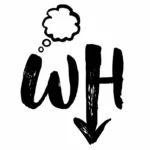Hey there, friends!
Do you have a young child at home who is ready to take that leap into early literacy, but you’re not quite sure where to start? We at WonderHere believe that it is so very important to introduce early literacy concepts simply and gently, in a way that promotes play and creativity. These five activities do just that!
Rhyming Clip Cards These Rhyming Clip Cards are perfect for introducing emerging readers to rhyming words through beautifully hand-drawn illustrations! Includes 12 Clip Cards, as well as a Picture Key!
These Rhyming Clip Cards are perfect for introducing emerging readers to rhyming words through beautifully hand-drawn illustrations! Includes 12 Clip Cards, as well as a Picture Key!
To prepare, print the cards out on card stock. Cut out and laminate the cards for durability. The objective is to find the illustrated word at the bottom that does not rhyme with the illustrated word at the top.
First, have your child say the picture name at the top of the card. Then, have them say the picture names at the bottom of the card. Have them decide which picture at the bottom did not rhyme. Place a clip or clothespin on the word that doesn’t rhyme. Another option is to use a game piece or small toy.
After some practice, your child will be able to do this activity more independently!
Rhyming Pair Memory Rhyming Pair Memory is another great activity for practicing rhyming words, this time through the structure of a familiar game! Includes 32 cards with words and hand-drawn illustrations.
Rhyming Pair Memory is another great activity for practicing rhyming words, this time through the structure of a familiar game! Includes 32 cards with words and hand-drawn illustrations.
Prepare by cutting out all 32 cards. Laminate for durability and extended use. The objective is to gain the most cards by finding rhyming pairs. Shuffle the cards then lay them out face down in an 8×4 array. You may also decide to play with less cards, just make sure that the ones you are playing with all have a matching pair.
Each person takes a turn turning over two cards, looking for a rhyming pair. Say the word printed on the card and represented by the picture. If the cards are a match, they get to keep the two cards, placing
them in a separate pile off to the side, and then take one additional turn. If the cards are not a match, they must turn the cards back over and it moves on to the next player’s turn. Encourage your child to try to remember where the cards are as the game progresses! The winner of the game is the person who has the most pairs after all cards have been collected.
Story Starter Dice Children, by nature, are vivid storytellers, especially young children! Help your child hone in this skill with these Story Starter Dice! Includes six dice, each with with six colorful, hand-drawn illustration.
Children, by nature, are vivid storytellers, especially young children! Help your child hone in this skill with these Story Starter Dice! Includes six dice, each with with six colorful, hand-drawn illustration.
To prepare, print the template for the dice on cardstock. Cut each dice out, but be careful to only cut along the outside solid lines. Fold along the dotted lines to form a cube. Tuck in the tabs. Tape to secure it all together.
Objective: To build a story using the pictures on the dice for inspiration. First, roll a die. Use the picture that you roll to begin a story. Roll again. Use the picture that you roll to continue the story. Keep rolling until you feel like your story is finished. Use a different die each time you play, to keep the story ideas fresh, or combine the use of all dice for endless possibilities!
If playing with multiple players, give each one a die. One person rolls and begins the story. The next person rolls and continues where the last person left off. Keep it going until everyone has had a turn or the story comes to an end.
For children not yet reading and writing independently, have them tell the story verbally, either recording them or writing it down for them. For children who are able, encourage them to write down their story.
Story Telling Puppets Storytelling with puppets is a timeless activity that your child will simply love! Includes 18 Story Telling Puppet cards with hand-drawn illustrations!
Storytelling with puppets is a timeless activity that your child will simply love! Includes 18 Story Telling Puppet cards with hand-drawn illustrations!
To prepare, print the puppet cards out on card stock. Cut out and for durability. Attach the puppet cards to craft sticks.
The objective is to tell a story using the puppets as props. First, have your child choose the puppets they will use in their storytelling. One child may do this alone or this may be done as a pair or group. Next, create a story using the puppets as characters or props. Each person can add to the story as they take turns speaking. Another option is to tell a familiar story, using the puppets to help. If creating a story, encourage all players to make sure that their story has a beginning, a middle, and an ending.
Syllable Count Cards Recognizing the number of syllables in a word helps with decoding words and building fluency! This Syllable Count Cards activity includes 32 count cards, each with a hand-drawn illustration!
Recognizing the number of syllables in a word helps with decoding words and building fluency! This Syllable Count Cards activity includes 32 count cards, each with a hand-drawn illustration!
To prepare, print and cut out the cards. Laminate them for future use, if you’d like.
First mix up the cards. Have your child choose a card and say the name of the picture. Have them place a token or even a piece of candy, like a jelly bean, in the little squares for each syllable the word has. For example, “apple” has 2 syllables, so they would place one marker each in two squares.
We hope these activities bring creativity and play into your early literacy instruction! Leave a comment below if you have any questions or feedback!




